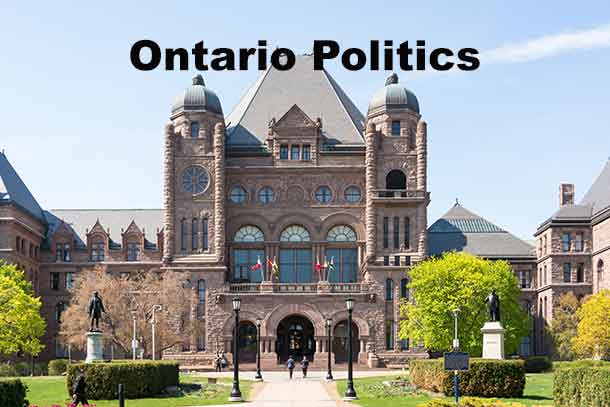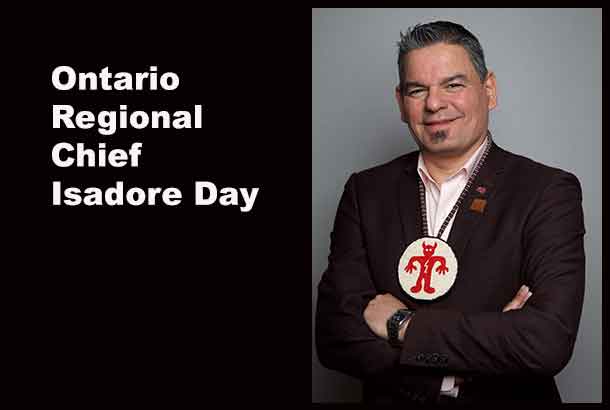

QUEENS PARK – “A balanced budget is more than just the bottom line number. It’s about finding new ways to help you and your family. It’s about creating opportunities and providing the supports people need to succeed. This balanced budget is dedicated to providing young people with free prescription medications, providing free tuition and helping businesses grow. We are delivering on our commitment to ensure that everyone has equal opportunities for success,” says Charles Sousa, Minister of Finance.
The Finance Minister released the 2017 Ontario Budget: A Stronger, Healthier Ontario, which includes significant investments in health care and education. Ontario’s first balanced budget since the global recession — thanks to a strong economy and responsible fiscal management — introduces free prescription drug coverage for everyone aged 24 and under, makes important investments to reduce wait times and improve access to care, helps students and makes life more affordable for Ontario families.
As a leader in economic growth, the Province is set to balance the budget this year and maintain a balanced budget for the next two years. A balanced budget means more funding for the programs and services people rely on most.
Brown – For 14 Years Liberals Have Made Life Harder
The budget is generating poor reviews from the Opposition Progressive Conservatives. Party Leader Patrick Brown states, “For 14 years this Liberal government has made life harder. Today’s budget is more proof that Ontario families will continue to pay more and get less.
“This is not a balanced budget. The government is hiding a more than $5 billion dollar operational deficit through cash grabs, unauthorized pension assets, and one-time and unusual revenue. The Wynne Liberals are cooking the books a year before the next election.
“The Liberals have no plan in this budget to get the debt under control. They’ve more than doubled the debt in just 14 years, and Ontario is worse off as a result. It’s eroding the services Ontario families depend on, and places a burden on future generations that they don’t deserve.
“Whether it’s hydro, health care, or housing, this budget is a patchwork attempt by a desperate government to fix the mess they created.
“But a Liberal is a Liberal. If they win, they’ll go back to their old ways, and raise your taxes, cut your health care, and hike your hydro rates once again.
“The Ontario PC Caucus cannot, and will not, support a budget that makes life harder. We will continue to stand up for Ontario families and taxpayers against this reckless government.”
New Democrats -Liberal Budget Demonstrates “Out of Touch Premier”
Showing how out of touch she is with Ontario families, Kathleen Wynne’s budget fails to undo the damage she has done to affordability for people, or the services they count on.
“What’s clear from this budget is that Ontarians waiting for a $15 minimum wage will have to wait for a change in government,” said NDP Leader Andrea Horwath. “The 85 per cent of Ontarians that want a public hydro system and reform that will get their bills down, and keep them down – they’ll have to wait for a change in government. And the vast majority of the 2.2 million Ontarians without a drug plan won’t get the help they need until after the election.”
The Wynne government’s 2017-18 budget, released Thursday, ignores Ontarians who have been feeling the squeeze caused by high prices for hydro, housing, medication and so much more.
“This budget doesn’t even come close to undoing the damage Kathleen Wynne and her Liberals have done over the last 14 years,” said Horwath.
· While providing drug coverage for children is necessary, the OHIP+ program leaves millions of people without coverage. One-third of all working Ontarians have no prescription drug coverage. Horwath has presented a universal Pharmacare program, which will provide prescription drug coverage to all Ontarians.
· The budget commits to even further privatization of Hydro One, even though the budget shows Ontario is already losing $1.2 billion in annual revenue as a result of the privatization so far – money that used to pay for schools, hospitals and more. Horwath has presented a plan to bring bills down by 30 per cent and bring Hydro One back into public ownership.
· Hospital funding falls more than $300 million short of what hospitals say they need. Pinning hospital funding down to annual inflation – two per cent – the budget won’t begin to reverse the damage of Wynne’s fired nurses, cancelled surgeries and overcrowded ERs.
· The budget ignores badly needed reforms to employment laws, overlooking the long-overdue Changing Workplaces Review and failing to implement a $15 minimum wage.
· With 300 schools on the chopping block today, there is no commitment in the budget to stop closing schools. A $4.6 million slash to special education across 15 school boards will go ahead, according to the budget.
· The budget continues to ignore the province’s responsibility for operating costs for transit, and does nothing to make transit better, or more affordable for students and working families. The NDP has committed to a 50-per-cent funding agreement along with its municipal partners.
· The budget does only the bare minimum to meet previous, already inadequate promises on early learning and child care.
“Kathleen Wynne watched the price of housing skyrocket while subsidized housing stock was allowed to crumble and be shut down. She sold off Hydro One without the consent of its owners – the people of Ontario – while denying that skyrocketing hydro bills were a problem for people. And she sat by while family after family, young person after young person, struggled under the weight of growing personal debt,” said Horwath.
“Hospitals have suffered through nine years of cuts and four years of frozen budgets. As a result, there are at least 250 patients in hallways and closets instead of proper hospital rooms.
“Kathleen Wynne just doesn’t get that people are being squeezed, and the services they count on are at a tipping point. Now is the time for big ideas, and a big priority shift to put people back at the centre of government.
“With this budget, it’s clear Ontario won’t even get to undo any of the damage done by Kathleen Wynne – let alone move ahead to a brighter future for Ontario people.”
Details on Budget 2017
Strengthening Ontario’s Health Care
The balanced 2017 Budget launches OHIP+: Children and Youth Pharmacare, a new drug benefit program that fully covers the cost of prescription medications for everyone aged 24 and under, regardless of family income. This program — the first of its kind in Canada — will ensure that young adults have access to universal drug coverage and parents never have to choose between paying for their children’s prescription drugs and providing other essentials.
Ontario is increasing health care investments by $11.5 billion over the next three years. The 2017 balanced Budget plan includes a new $7-billion booster shot to health care, building on the commitment made in the 2016 Budget. This investment will improve access to care, expand mental health and addiction services, and enhance the experience and recovery of patients. It includes $1.3 billion to further reduce wait times.
With the balanced 2017 Budget, Ontario is committing to several new major hospital projects across the province, adding to the 34 underway. An additional $9-billion capital investment over 10 years will provide faster access to care and help to meet the needs of the growing aging population.
The Province is expanding home and community care programs, including home nursing, personal support and physiotherapy services, with an additional investment of $250 million this year. Family and friends caring for loved ones will be better supported through access to respite care, education and training, and a new Ontario Caregiver Tax Credit.
Ontario’s new Dementia Strategy will improve and better coordinate services for those living with dementia and their caregivers by providing more than $100 million over three years.This will include funding to expand provincewide access to community programs and other investments to enhance access to care, information and support when a diagnosis is made.
Improving Education
With an additional investment of $6.4 billion over three years, the balanced 2017 Budget reflects the government’s commitment to help learners reach their full potential by supporting them from full-day kindergarten to postsecondary education and beyond.
The Province continues to construct new schools and renew existing ones to create nurturing environments where children can learn and grow. The Province is providing almost $16 billion over 10 years to help build and improve schools.
The government is rolling out the new Ontario Student Assistance Program, which means free tuition for more than 210,000 students in postsecondary education starting this fall.
Creating Opportunities
Ontario’s new Career Kick-Start Strategy will provide nearly $190 million over three years to create 40,000 new work-related opportunities for students and recent graduates to give them the experience they need to help land a good job.
With the balanced 2017 Budget, Ontario is ensuring it remains at the forefront of research and development in transformative technologies that will lead tomorrow’s growth. In doing so, Ontario’s new investments in artificial intelligence, fifth-generation wireless technology, advanced computing, autonomous vehicles and quantum technologies will make the province’s economy more innovative and create more well-paying jobs.
Making Life More Affordable
To make everyday life more affordable, the balanced 2017 Budget is strengthening the public services that matter most to people while lowering costs.
The Province is helping 100,000 more children get affordable, quality licensed child care. In 2017-18, Ontario will support child care for 24,000 more children up to four years old through new fee subsidy spaces and support for new licensed child care spaces in schools. The government will continue to work with schools and municipalities to fund the expansion of school-, community- and home-based licensed care that is convenient, flexible and in line with parents’ needs.
The government is also taking action to make housing more affordable for homebuyers and renters with Ontario’s Fair Housing Plan. This plan introduces a comprehensive package of measures to help more people find affordable homes, as well as increase supply, protect buyers and renters, and bring stability to the real estate market.
These proposed measures include a new non-resident speculation tax of 15 per cent on the price of homes in the Greater Golden Horseshoe purchased by non-Canadian citizens, non-permanent residents and non-Canadian corporations buying properties that contain at least one and not more than six single-family residences.
The plan also proposes to expand rent control to all private rental units — including those built after 1991 — and to empower Toronto and potentially other municipalities to introduce a tax on vacant homes to encourage owners to sell or rent them.
The government is committed to lowering household electricity bills by 25 per cent, on average, beginning this summer, and to holding rate increases over the next four years to inflation. In addition, the government is also proposing to lower energy costs by expanding access to natural gas to communities that do not currently have service, including rural, northern Ontario and First Nation communities.
The government is delivering on its commitment to balance the budget this year, building on a successful track record of prudent fiscal management, which has made Ontario an economic leader in Canada and the world.
QUICK FACTS
- The Province’s investment in public infrastructure of more than $190 billion over a 13-year period, which started in 2014–15, is the largest infrastructure investment in the province’s history. It is supporting projects such as building child care spaces, schools, hospitals, public transit, highways and roads.
- Over the last three years, Ontario’s real GDP growth has outpaced that of all G7 countries. Exports and business investments are increasing, household incomes are rising and the unemployment rate continues to decline — and has been below the national average for 24 consecutive months.
- Employment in 2017 is forecast to increase by 1.3 per cent, or 94,000 net new jobs, following 1.1 per cent growth in 2016. These gains are expected to continue at 1.1 per cent annually, on average, from 2018–20. This would result in 900,000 net new jobs created between 2010 and 2020, the majority in industries that pay above-average wages, in the private sector and in full-time positions.
ADDITIONAL RESOURCES |






